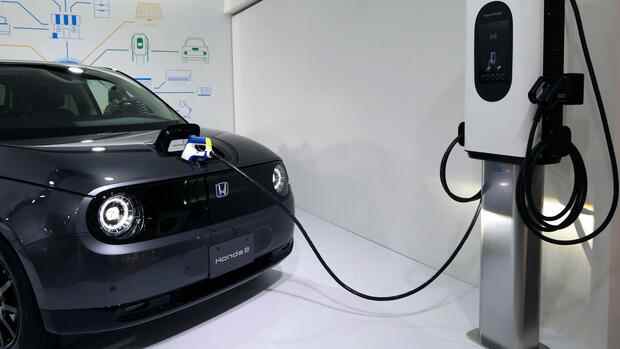Tokyo Honda is known for special ways. This is already evident in the boardroom, which literally takes up an entire floor. The board members do not sit in their own offices, but together in an open-plan office. This creates fast communication and decision-making channels. A year after taking office, CEO Toshihiro Mibe has now presented his very own version of the strategic shift away from combustion engines to electric cars in detail, of which only the outlines were previously known. And it stands out from the competition.
“We need a comprehensive approach that doesn’t just replace the combustion engine with an electric motor,” Mibe said on Tuesday. Honda wants to sell two million electric cars a year by 2030, around 40 percent of the sales planned by then. A separate software platform for the Stromer should provide new income. By then, the company will have invested around 37 billion euros in new technology, factories, software development and even its own next-generation batteries. The aim is to bring 30 electric models onto the market worldwide by 2030.
But while the larger local rival Nissan is relying on a close alliance with Renault and Mitsubishi Motors to make the transition to electromobility, Honda wants to retain its independence despite currently selling only 4.2 million cars. The Japanese rely on event-related alliances and regionally adapted product strategies. They have even committed themselves to an experimental cooperation with the electronics group Sony.
The Japanese giant of consumer electronics recently announced that it would enter the electric car business itself. As a development and production partner, Honda is part of the project, which, according to the company, is intended to test “software-defined mobility”. With their own networking technology, sensors and IT, the two partners want to develop an unprecedented new driving experience.
Top jobs of the day
Find the best jobs now and
be notified by email.
The first Sony-Honda collaboration model is expected to hit the market in 2025. And the results of the development can also be incorporated into Honda’s electric car architecture planned for 2026, said CEO Mibe. The car should integrate hardware, operating system and applications and be just as easy to use as a smartphone.
New electric cars in China, but no quick farewell to the internal combustion engine
In addition, Honda is developing a joint electric car platform with the US group GM. The partners have set themselves the goal of selling electric cars in the USA by 2027 that cost no more than a petrol engine. The GM subsidiary Cruise is to provide Honda with the necessary technology for self-driving cars and autonomous driving services.
In China and in the home market of Japan, however, Honda is going it alone. In China alone, the group plans to have ten new electric models by 2027. Honda intends to only sell electric cars in China and also produce them locally by 2030.
The Japanese car manufacturer relies on many international alliances.
(Photo: AP)
The home market of Japan, on the other hand, is becoming a test market for cheap mobile phones. As early as the beginning of 2024, Honda wants to launch a small electric commercial vehicle that will cost less than 8,000 euros. It could also become the basis for the first Stromer in other Asian markets.
However, Honda does not want to commit itself to pure electric cars alone. In Japan and the rest of Asia, the group continues to rely on hybrids, which Honda also wants to develop further. “Hybrids will be a powerful weapon for us by 2030,” said Honda’s CEO. Honda does not predict the end of the combustion engine until 2040.
On the way to the solid-state battery
Analysts’ fears that Honda, as a relatively small global manufacturer, could get bogged down are vehemently contradicted by CEO Mibe. “It might seem like we’re expanding in many different directions,” he admitted. This can seem inefficient. “But we are in the early stages of electromobility and therefore have to adapt to the different regions,” said the Honda boss. He expects pure electric cars to become the new standard after 2030 and Honda to consolidate the different development strands.
>> Read about this: On the way to the green solid-state battery – this is how batteries should get better
Honda uses a similar strategy for batteries. In the USA, Honda obtains so-called “Ultium” batteries from GM, which should also be able to cover long distances. In addition, the group is negotiating with other battery manufacturers about a battery joint venture for the USA. In China, however, Honda is expanding its cooperation with the world’s largest battery manufacturer CATL. In Japan, the Japanese are meanwhile relying on the Nissan spin-off Envision AESC, which is also to supply Daimler in the USA.
In the future, Honda also wants to go its own way with the batteries: Like its local competitors Toyota and Nissan, the group is working on the next generation of batteries: solid-state batteries whose energy density is twice as high as that of the lithium-ion batteries currently installed. Honda wants to start pilot production for the new super battery as early as 2024 and then mass production a few years later.
More: Mercedes wants to halve its CO2 emissions by 2030.
